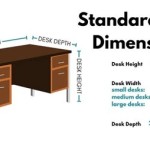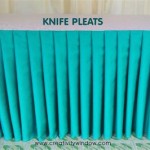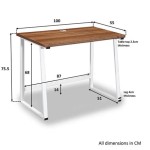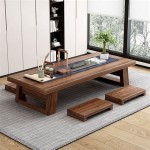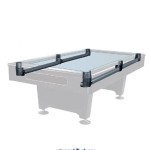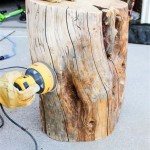The Versatile 6 Foot Round Table: A Comprehensive Guide
The 6 foot round table, also known as a 72-inch round table, is a standard and frequently utilized piece of furniture in event planning, catering, and various institutional settings. Its circular design and substantial size offer a multitude of benefits, making it a versatile choice for seating guests, displaying products, or providing a collaborative workspace. Understanding the dimensions, capacity, optimal use cases, and available materials is crucial for informed decision-making when selecting tables for a specific purpose.
This article provides a comprehensive overview of the 6 foot round table, exploring its key features, advantages, and practical applications. It delves into various aspects, including seating capacity considerations, material options, setup strategies, and factors to consider when renting or purchasing these tables.
Seating Capacity and Space Planning
One of the primary considerations when selecting a 6 foot round table is its seating capacity. While the precise number of guests that can be comfortably seated depends on factors such as chair size and individual space preferences, a general guideline suggests accommodating 8 to 10 people. Eight guests will typically find the space more generous and comfortable, while ten may require slightly closer proximity.
Optimal space planning is essential to ensure adequate room for guests to move around the table and the surrounding area. Insufficient space can lead to congestion, discomfort, and difficulties in serving food or beverages. A minimum of 30 inches of space between the edge of the table and any walls or other obstacles is generally recommended. This allows guests to comfortably pull out their chairs and navigate the space without obstruction. For larger events, consider allocating even more space to facilitate smoother traffic flow.
Furthermore, when arranging multiple 6 foot round tables within a venue, it's important to consider the overall layout and spacing between tables. Adequate spacing not only enhances guest comfort but also allows servers ample room to maneuver and provide efficient service. A common rule of thumb is to maintain a distance of at least 60 inches between tables. This spacing ensures that guests seated at one table do not feel crowded by those at adjacent tables and also provides sufficient space for serving carts or staff to pass through easily.
The shape of the room also influences table arrangement. In rectangular rooms, it's often advantageous to position tables in rows or columns, optimizing space utilization. In irregularly shaped rooms, a more flexible arrangement may be necessary to adapt to the architectural constraints. Careful measurement and layout planning, perhaps utilizing a scaled floor plan, are crucial to maximize space efficiency and ensure a comfortable experience for all attendees.
Beyond the seating capacity and table spacing, it’s crucial to consider the overall ambiance. If the event requires significant movement, such as dancing or active participation, more open space surrounding the tables will be needed. Consider also the type of event; a formal dinner may require more space per guest than a casual buffet.
Material Options and Durability
6 foot round tables are available in a variety of materials, each offering distinct characteristics in terms of durability, aesthetics, and maintenance requirements. The most common materials include plastic, wood, and metal, often in combination. The choice of material impacts the table's weight, stability, resistance to damage, and overall suitability for different environments.
Plastic tables, typically made from high-density polyethylene (HDPE), are a popular choice due to their lightweight construction, affordability, and resistance to water damage. These tables are often foldable, making them easy to transport and store. While plastic tables are generally durable, they may be susceptible to scratches and dents, and they may not be as aesthetically pleasing as other options for formal events. Moreover, plastic tables can sometimes exhibit a slight flex under heavy loads, particularly if they lack adequate internal reinforcement.
Wooden tables, particularly those constructed from hardwood like maple or oak, offer a more elegant and substantial appearance. Wooden tables are typically more durable than plastic tables and can withstand heavier loads without bending or warping. However, wooden tables are also significantly heavier and more expensive. They require more careful maintenance to prevent damage from moisture, scratches, and stains. Regular cleaning and occasional refinishing may be necessary to maintain their appearance and structural integrity. Wooden tables are often used for more formal events, where aesthetics are a paramount consideration.
Metal tables offer exceptional strength and durability, although they are less common for standard round tables. They are often used as the base or frame for tables with plastic or wooden tops. Metal tables are highly resistant to damage and can withstand significant weight. However, they can be prone to rust if not properly treated or coated. Metal tables are often used in outdoor settings or in environments where durability is a primary concern.
Many tables incorporate a combination of materials. For instance, a table may have a plastic top and a metal frame to provide a balance of durability, affordability, and ease of maintenance. Another common combination is a wooden top with metal legs, offering a blend of aesthetics and structural support.
The material selection also depends on the intended use. For example, a catering company that frequently sets up events outdoors may prioritize lightweight and waterproof plastic tables. A hotel hosting formal banquets may opt for elegant and sturdy wooden tables. The budget, aesthetic preferences, and expected usage patterns must all be considered when determining the optimal material for a 6 foot round table.
Setup and Configuration Strategies
Proper setup and configuration of 6 foot round tables are crucial to ensure a successful event. This includes considering the table placement, linens, centerpieces, and other decorative elements. A well-planned setup contributes to the overall aesthetic appeal and functionality of the space, enhancing the guest experience.
The choice of linens can significantly impact the visual appeal of the tables. Floor-length tablecloths are often preferred for formal events, as they create a more elegant and polished look. Shorter tablecloths may be suitable for more casual events. The color and fabric of the linens should complement the overall theme and décor of the event. Consider also the quality of the linen; high-quality fabrics will drape better and resist wrinkles, enhancing the overall presentation.
Centerpieces play a vital role in adding visual interest and creating a focal point on each table. The size and style of the centerpieces should be carefully considered to avoid obstructing sightlines and hindering conversation among guests. Tall centerpieces can be visually striking, but they may make it difficult for guests to see each other across the table. Low centerpieces are generally preferred, as they allow for unobstructed views and facilitate easier conversation.
The choice of centerpieces should also complement the overall theme of the event. Floral arrangements are a popular choice for weddings and other formal occasions. Other options include candles, decorative objects, or thematic displays that reflect the purpose of the event. The height, width, and overall scale of the centerpiece should be proportionate to the size of the table and the surrounding space.
Table placement is another critical factor. As discussed earlier, adequate spacing between tables is essential for guest comfort and ease of movement. The tables should be arranged in a way that maximizes space utilization and facilitates smooth traffic flow. Consider the placement of doorways, exits, and other architectural features when determining the optimal table layout.
Other decorative elements, such as place cards, menus, and favors, can also contribute to the overall aesthetic appeal of the tables. These elements should be carefully coordinated with the linens, centerpieces, and other décor to create a cohesive and visually appealing presentation. Attention to detail is crucial in creating a memorable and enjoyable experience for guests.
Folding tables offer convenience in storage and transportation. When setting up folding tables, ensure that the locking mechanisms are engaged securely to prevent accidental collapses. For outdoor events, consider using table leg levelers to compensate for uneven surfaces and maintain table stability. Wind can also be a factor for outdoor events, so heavier tablecloths or table clips may be needed to secure the linens.
Finally, consider the lighting. Overhead lighting should be adequate to illuminate the tables without being overly harsh. Soft lighting can create a more intimate and inviting atmosphere. Candles or other decorative lighting elements can also be used to enhance the ambiance. Carefully consider the interplay of light and shadow to create a visually appealing and welcoming environment.

Minton 6 Ft Round Teak Table Country Casual

Hudson 6 Ft Outdoor Round Teak Dining Table By Country Casual

6 Ft Dia Vogue Dining Table Teak Stainless Steel Westminster

Royal Teak Collection High Quality All Weather Wicker Outdoor Furniture 843 227 5800

Pin On Dining Room

Flash Furniture 6 Foot Round Granite White Plastic Folding Table Com

Teak Extendable Dining Table Snowdon Extension

6 Ft Round Buckingham Teak Dining Table Westminster

6 Foot Round Bi Fold Granite White Plastic Banquet Andt Folding Table With Carrying Handle Dad 183rz Gg Com

6 Ft Round Table Corporate Hire Budget Event

